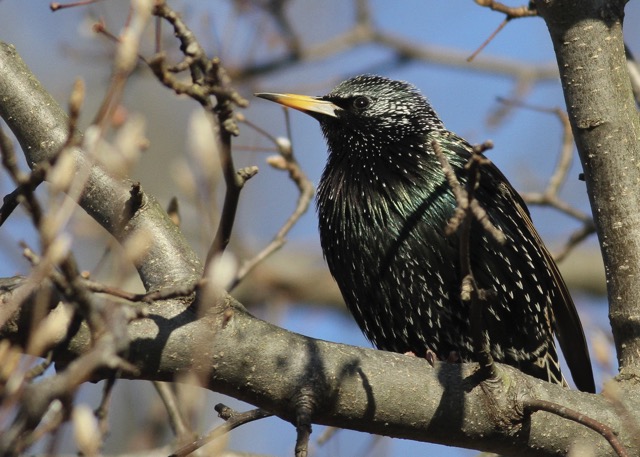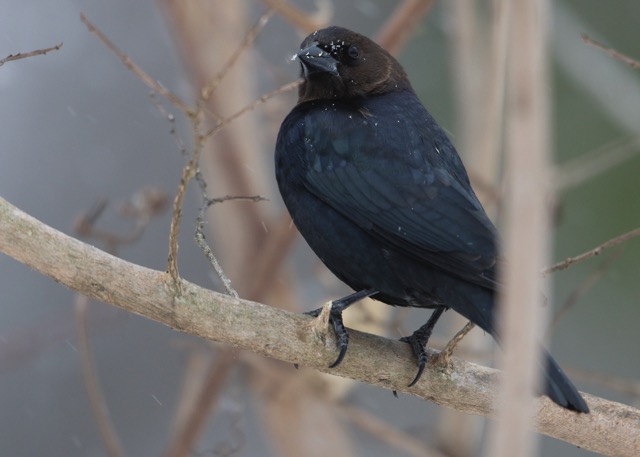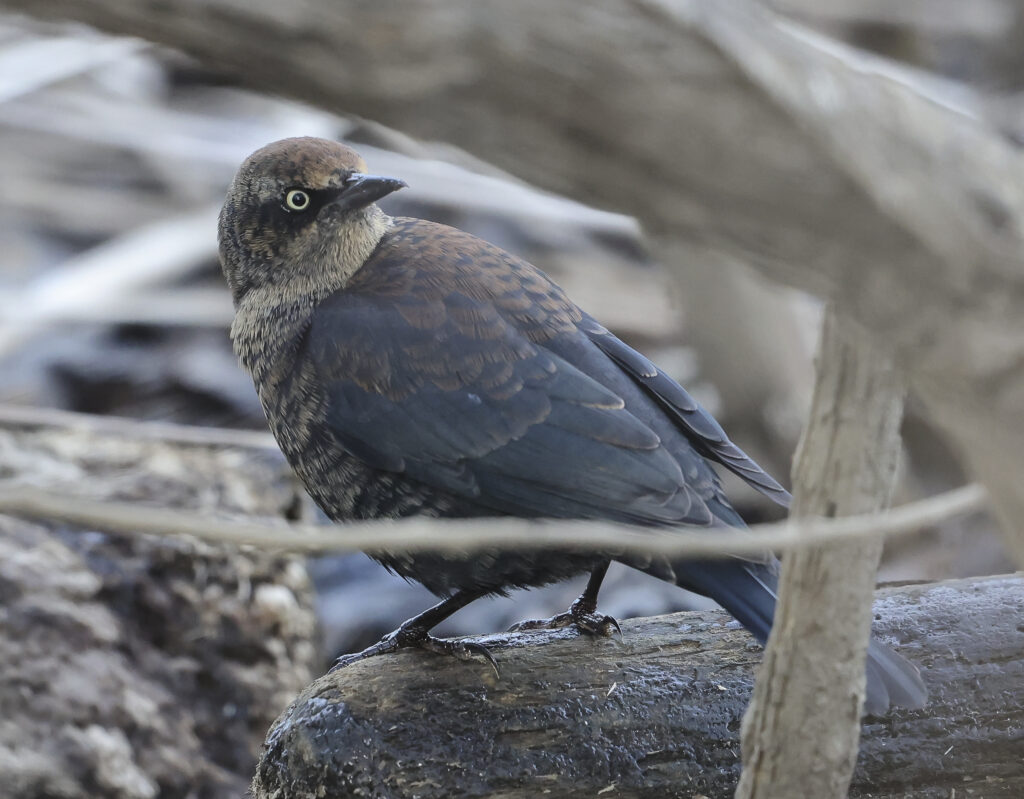A Guide to the Chesapeake’s Various Black Birds






By Wayne Bierbaum
This past weekend, I was standing at the edge of a marsh at sunrise when a flock of about 50 birds flew low overhead. Someone standing near me asked what kind of birds they were. Because of their bouncing flight pattern and the clicking sounds they made as they flew, I knew I was looking at red-winged blackbirds. I began thinking that there were not that many possibilities for answers. I began to mentally make a list of the dark flocking birds found in the Chesapeake’s watershed.

The most widespread black “colored” bird is the red-winged blackbird. They are about the size of a cardinal and seem to be found in almost any field, along any marsh, and around any lake in Maryland. Their name comes from the red wing patch on the males. The female is dark-dark brown with lighter streaks. In the spring, the males arch their wings forward to show off the red wing bars, and sing loudly to defend nesting sites from other males. Naturally, this display is meant to attract females. The females nest in tall grass; one male may partner with several females. They spread out in the spring and summer but flock in huge numbers in the winter—sometimes in the thousands. I saw a flock on the Eastern Shore that took probably a full five minutes to fly overhead; they were squawking to each other the entire time.

The rusty blackbird is a fairly uncommon bird around our swampy areas. They nest in northern North America but come to Maryland in the winter. They are the same size as a red-winged blackbird but have steely gray eyes and dark brown feathers with lighter rusty-brown patches. They arrive in small flocks, usually 30 or less, and sometimes travel with red-winged blackbirds. They can be found searching for food at the edge of a swampy area. Rusty blackbirds frequently are found along the shore of Cash Lake at the at Patuxent Research Reserve.

The common grackle is a very dark bird with blue and golden iridescence in its feathers and golden eyes. They are slightly larger than a red-winged blackbird and have longer tails. The birds forage along shorelines and fields but nest in trees. Their flocks can be huge and they tend to fly low. Their deep cuck-cuck sounds as they fly keeps the flock together but is also helpful in identifying the birds from a distance. They commonly will descend into suburban neighborhoods and loudly cover lawns as they search for food. The grackle is also attracted to farmland and will eat tons of grain.

The common grackle has a larger relative, the boat-tailed grackle. The male boat-tailed grackle is iridescent blue-black with a long gray beak and yellow eyes. The female is the same size and shape but is a dark brown color. They nest in shore grasses and are found along shorelines. Their large long and wide tail has a medial split which helps them appear to sail through the air. They generally do not form large flocks but they talk to each other a lot with artificial robot-like sounds—they can sound like Star Wars’ R2D2. When I visit the Delaware Bay shoreline in the spring, they are always there feeding on horseshoe crab eggs. I frequently see them at Sandy Point State Park and along the Patuxent River.

Another dark bird that travels in huge flocks is the European starling, an introduced invasive species. There’s a rumor that in 1890, 100 starlings were (theatrically) released into Central Park, in New York City by a Shakespeare enthusiast. However they got here, by the 1900s they had established themselves from coast to coast. Starlings have almost black iridescent feathers that have a spattering of yellow dots found at the tips. The iridescence, depending on the light angle, can be from green to blue. The adult’s bill is yellow and very pointed and they have dark eyes. These birds nest in hollowed areas like woodpecker’s nests, drier vents, cracked house siding, etc. They are frequent visitors to farmland and will live around marshes. They are noisy and aggressive. In the winter, they usually travel in small flocks but have been seen in massive flocks called murmuration.

The last of the common black-colored birds is the loathsome brown-headed cowbird. The male has a nearly black body but a dark brown neck and head. The female is dark brown all over. Both sexes have dark eyes. They are frequently seen in breeding groups in the winter. The females will mate with several males and in the spring they look to lay eggs in other birds’ nests. They are nesting parasites and can lay an egg in six unrelated bird nests. The young hatch early and push the other eggs or hatchlings out of the nest. Vireos and warblers are common targets. I’m not fond of these birds and have had to chase them away from bluebird nesting sites.
Winter is the time when seed-eating dark-colored birds will collect in flocks. They travel in these large flocks for safety and to share group intelligence. More birds means more eyes to watch for predators and send out an alert. Since they are always talking to each other, it is hard for predators to sneak up on them. Large flocks also have an advantage in finding food and collectively making decisions on where to visit. The bird with the best knowledge of an area appears to be the leader of the flock. In this time of large-scale farming operations, bird flocks have become larger, too. Farms on the Eastern Shore are the best places to witness massive flocks of common grackles, red-winged blackbirds, or starlings. Watch for murmuration, when the flock will swirl and writhe due to the presence of a nearby hawk or falcon.
